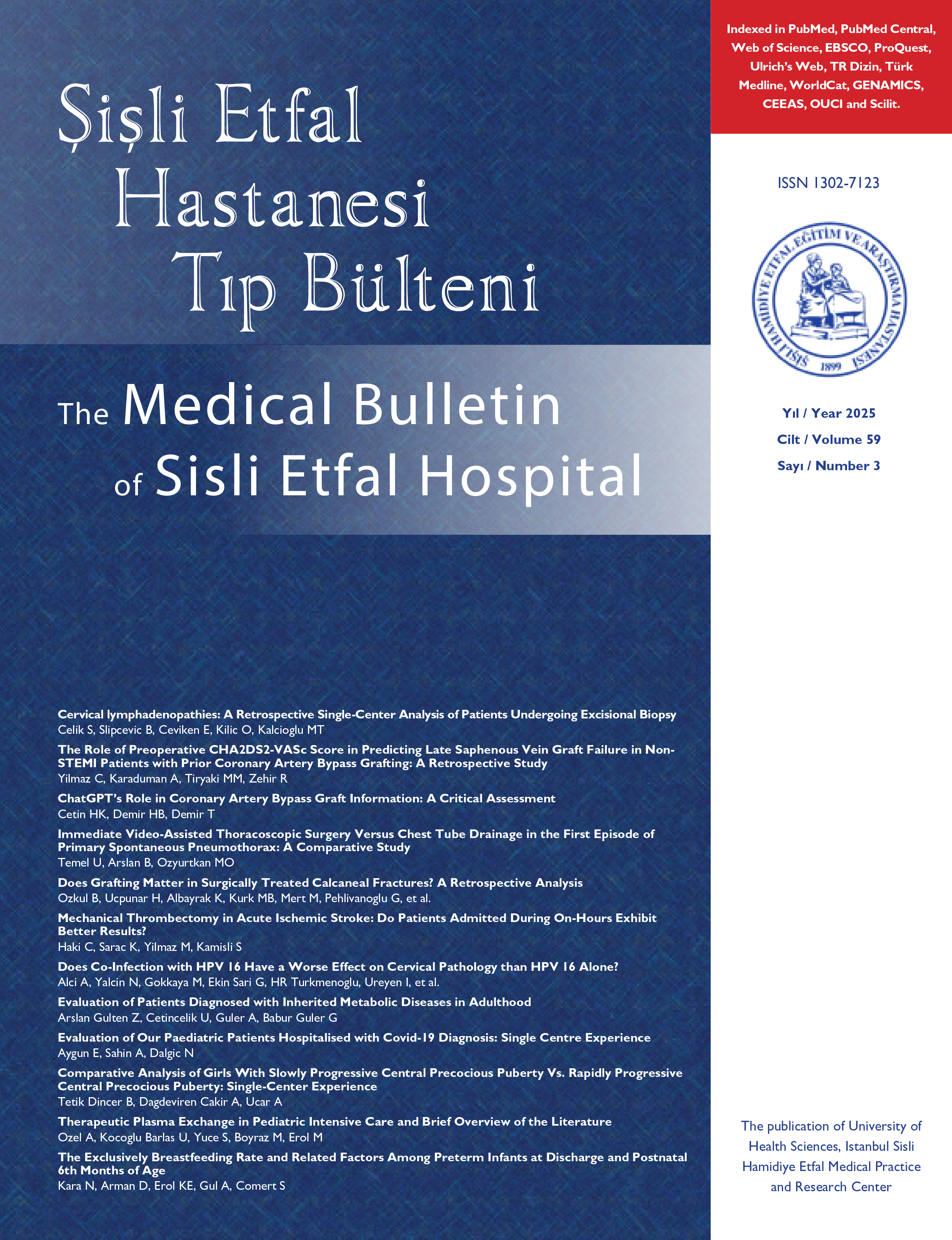
Effects of Ankylosing Spondylitis on Erectile Function
Ibrahim Halil Erdem1, Mazhar Ortac2, Emre Salabas31Department of Physical Medicine and Rehabilitation, Avcılar Murat Kölük State Hospital, Istanbul, Turkey2Department of Urology, Haseki Training and Research Hospital, Istanbul, Turkey
3Department of Urology, Biruni University Faculty of Medicine, Istanbul, Turkey
Objectives: Ankylosing spondylitis (AS), which is a chronic rheumatologic disorder, may be associated with erectile dysfunction (ED). This study aims to investigate the incidence of erectile dysfunction in patients with AS with a control group and to investigate the risk factors for ED.
Methods: All demographic data were recorded. Participants in both groups filled in the IIEF-5 (International Index of Erectile Function), Beck Depression Index (BDI) and Beck Anxiety Index (BAI) questionnaires, whereas patients with AS additionally filled in Bath Ankylosing Spondylitis Disease Activity Index (BASDAI), Bath Ankylosing Spondylitis Functional Index (BASFI), Bath Ankylosing Spondylitis Metrological Index (BASMI) and Ankylosing Spondylitis Quality of Life (ASQoL) questionnaires. Patients were compared concerning erectile function and predictive factors. Fifty patients with the AS diagnosis and fifty healthy males were included in this study.
Results: ED of all degrees was present in 38% and 30% of males in the AS group and control group, respectively, with no statistical difference. However, the mean IIEF-EF domain score of the AS group (22.3±7.0) was significantly lower than the control group (25.7±4.3) (p=0.004). In addition, BDI and BAI scores were significantly higher in the AS group. When we have divided patients in the AS group into two, according to the presence or absence of the ED, the mean IIEF-EF domain score of patients with ED was lower than AS patients without ED. No difference was detected in both groups concerning age and the duration of the disease. Patients who had ED in the AS group had significantly higher scores in BASDAI, BASFI, depression and anxiety; however, no significant difference was detected among groups regarding BASMI scores.
Mean IIEF score was lower in patients with AS, and this had a negative correlation with BASDAI, BASFI, ASQoL, BDI and BAI scores.
Conclusion: Erectile function scores were slightly lower in the AS group than the control group in our study. ED risk factors were shown as disease activity and psychological status.
Keywords: Ankylosing spondylitis, erectile function; quality of life.
Ankilozan Spondilitin Erektil Fonksiyon Üzerindeki Etkisi
Ibrahim Halil Erdem1, Mazhar Ortac2, Emre Salabas31Avcılar Murat Kölük Devlet Hastanesi, İstanbul2Haseki Eğitim ve Araştırma Hastanesi Üroloji Kliniği, İstanbul
3Biruni Üniversitesi Tıp Fakültesi, Üroloji Anabilim Dalı, İstanbul
Objectives: Ankylosing spondylitis (AS), which is a chronic rheumatologic disorder, may be associated with erectile dysfunction (ED). This study aims to investigate the incidence of erectile dysfunction in patients with AS with a control group and to investigate the risk factors for ED.
Methods: All demographic data were recorded. Participants in both groups filled in the IIEF-5 (International Index of Erectile Function), Beck Depression Index (BDI) and Beck Anxiety Index (BAI) questionnaires, whereas patients with AS additionally filled in Bath Ankylosing Spondylitis Disease Activity Index (BASDAI), Bath Ankylosing Spondylitis Functional Index (BASFI), Bath Ankylosing Spondylitis Metrological Index (BASMI) and Ankylosing Spondylitis Quality of Life (ASQoL) questionnaires. Patients were compared concerning erectile function and predictive factors. Fifty patients with the AS diagnosis and fifty healthy males were included in this study.
Results: ED of all degrees was present in 38% and 30% of males in the AS group and control group, respectively, with no statistical difference. However, the mean IIEF-EF domain score of the AS group (22.3±7.0) was significantly lower than the control group (25.7±4.3) (p=0.004). In addition, BDI and BAI scores were significantly higher in the AS group. When we have divided patients in the AS group into two, according to the presence or absence of the ED, the mean IIEF-EF domain score of patients with ED was lower than AS patients without ED. No difference was detected in both groups concerning age and the duration of the disease. Patients who had ED in the AS group had significantly higher scores in BASDAI, BASFI, depression and anxiety; however, no significant difference was detected among groups regarding BASMI scores.
Mean IIEF score was lower in patients with AS, and this had a negative correlation with BASDAI, BASFI, ASQoL, BDI and BAI scores.
Conclusion: Erectile function scores were slightly lower in the AS group than the control group in our study. ED risk factors were shown as disease activity and psychological status. (SETB-2018-07-102)
Anahtar Kelimeler: Ankilozan spondilit, erektil fonksiyon; yaşam kalitesi.
Manuscript Language: English



















